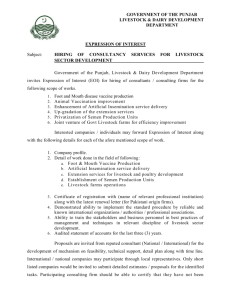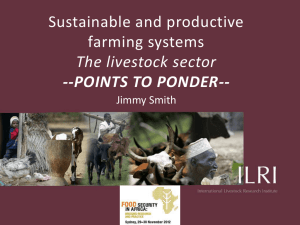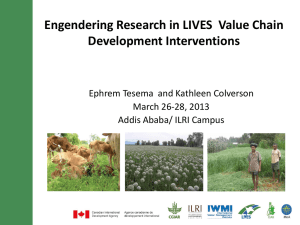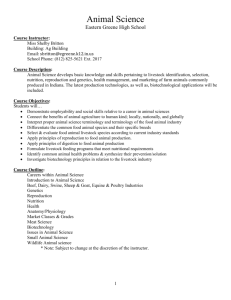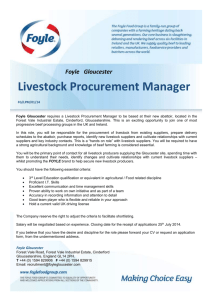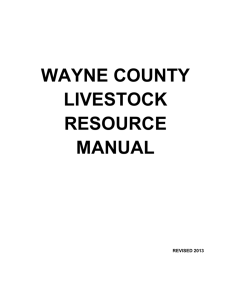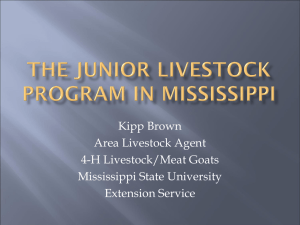ahm_mod2
advertisement
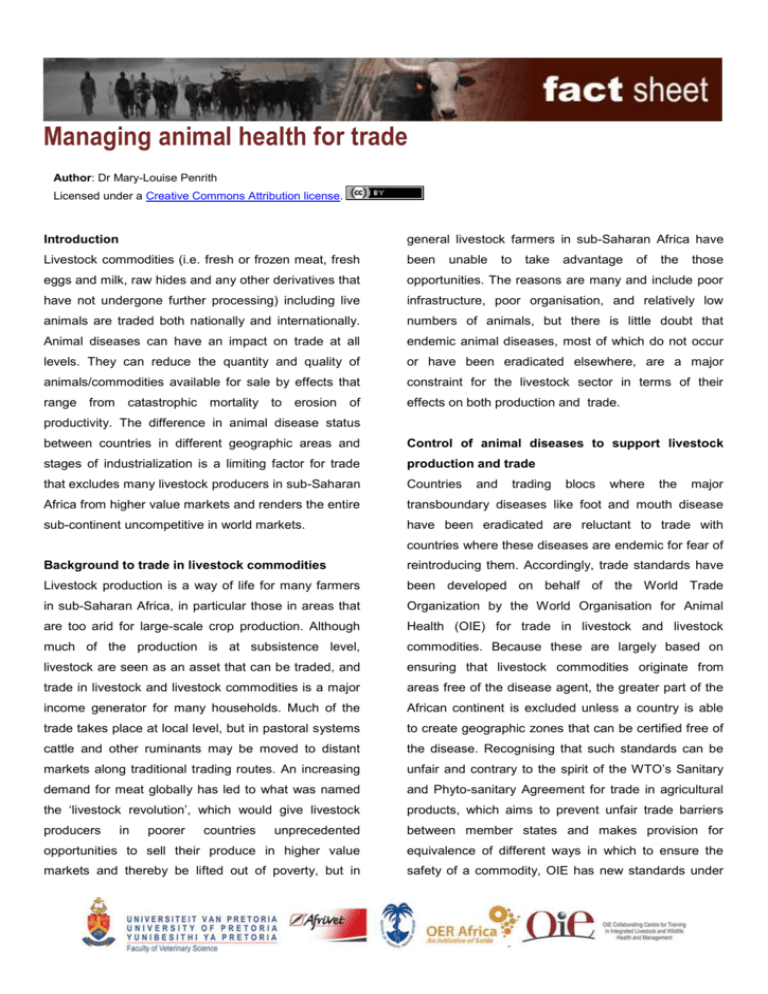
Managing animal health for trade Author: Dr Mary-Louise Penrith Licensed under a Creative Commons Attribution license. Introduction general livestock farmers in sub-Saharan Africa have Livestock commodities (i.e. fresh or frozen meat, fresh been eggs and milk, raw hides and any other derivatives that opportunities. The reasons are many and include poor have not undergone further processing) including live infrastructure, poor organisation, and relatively low animals are traded both nationally and internationally. numbers of animals, but there is little doubt that Animal diseases can have an impact on trade at all endemic animal diseases, most of which do not occur levels. They can reduce the quantity and quality of or have been eradicated elsewhere, are a major animals/commodities available for sale by effects that constraint for the livestock sector in terms of their range from catastrophic mortality to erosion of effects on both production and trade. unable to take advantage of the those productivity. The difference in animal disease status between countries in different geographic areas and Control of animal diseases to support livestock stages of industrialization is a limiting factor for trade production and trade that excludes many livestock producers in sub-Saharan Countries Africa from higher value markets and renders the entire transboundary diseases like foot and mouth disease sub-continent uncompetitive in world markets. have been eradicated are reluctant to trade with and trading blocs where the major countries where these diseases are endemic for fear of Background to trade in livestock commodities reintroducing them. Accordingly, trade standards have Livestock production is a way of life for many farmers been developed on behalf of the World Trade in sub-Saharan Africa, in particular those in areas that Organization by the World Organisation for Animal are too arid for large-scale crop production. Although Health (OIE) for trade in livestock and livestock much of the production is at subsistence level, commodities. Because these are largely based on livestock are seen as an asset that can be traded, and ensuring that livestock commodities originate from trade in livestock and livestock commodities is a major areas free of the disease agent, the greater part of the income generator for many households. Much of the African continent is excluded unless a country is able trade takes place at local level, but in pastoral systems to create geographic zones that can be certified free of cattle and other ruminants may be moved to distant the disease. Recognising that such standards can be markets along traditional trading routes. An increasing unfair and contrary to the spirit of the WTO’s Sanitary demand for meat globally has led to what was named and Phyto-sanitary Agreement for trade in agricultural the ‘livestock revolution’, which would give livestock products, which aims to prevent unfair trade barriers producers unprecedented between member states and makes provision for opportunities to sell their produce in higher value equivalence of different ways in which to ensure the markets and thereby be lifted out of poverty, but in safety of a commodity, OIE has new standards under in poorer countries development. However, it is up to the countries most Web-based modules on high impact diseases affected by the geographic standards to ensure that the provide more detail on how individual diseases of new importance are managed. approaches are implemented and adopted internationally. Web-based modules on the various tools used for The most important disease in terms of trade barriers is animal health management provide more detail on foot and mouth disease (FMD). A few countries in laboratory diagnostics, molecular applications, Southern Africa have gained access to high value passive markets in Europe for their beef by creating and diseases maintaining zones that are recognised by OIE as free animal identification and traceability, disease from FMD. However, increased outbreaks of FMD over freedom for countries, zones or compartments, the the last decade suggest that the integrity of these use of vaccination, the role of therapeutics and the zones, in spite of high costs of maintaining them, is no principles of biosecurity. longer guaranteed. Additionally, the zones depend to a and active including surveillance participatory for animal surveillance, Web-based modules on zoonotic diseases explore large extent on veterinary cordon fences that separate the way those diseases manifest in and spread wildlife from domestic livestock. The negative effects of between humans and animals. these fences on wildlife are increasingly recognised. The creation of a number of Web-based modules for CPD or degree purposes transboundary on emerging and re-emerging diseases discuss conservation areas, mostly in Southern Africa, which the drivers that have resulted in ‘new’ diseases, allow multiple land uses but as far as possible allow many of which are zoonotic, and the challenges free movement of wildlife along old migration routes, that occur when a ‘new’ disease emerges or an has necessitated a strong focus on finding alternative old disease assumes new patterns. ways to manage FMD. At the same time a focus on Web-based modules on livestock marketing and improving rural livelihoods and increasing income from trade provide insight into the challenges posed by livestock includes efforts to increase access to higher animal health issues that have to be overcome in value markets in and outside the region. This will order to support international trade in livestock require that animal diseases in general will have to be and livestock commodities. managed better to improve food security and selfsufficiency locally and increase competitiveness in regional and international markets. The approaches will need to be cost-effective, acceptable to the livestock producers, environmentally friendly and to deliver larger numbers of healthier animals. Participation of livestock producers and other industry stakeholders will be imperative for control measures to succeed. Find out more Web-based modules for degree purposes or CPD on issues that influence animal health management and the tools for animal health management are available in which objectives, approaches, impacts and challenges are explored.

